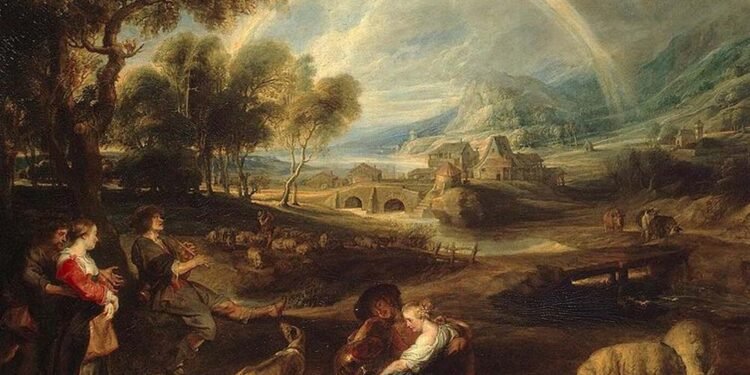The Baroque period, which originated in the early 17th century and spanned over a century, was a vivid chapter in the history of European art. It was an era that sought to evoke emotion and awe through opulence and grandeur, both in art and architecture. As we peel back the layers of time, we invite you to discover the beauty of Baroque paintings, where every canvas is an exploration of vivid drama, deep emotion, and the interplay of light and darkness.
The Origins of Baroque Art
To truly discover the beauty of Baroque paintings, one must first understand its roots embedded in the cultural soil of post-Renaissance Europe. Baroque art emerged as an artistic weapon during the Counter-Reformation, a time when the Catholic Church sought to reassert its influence through visually compelling narratives against the stark doctrines of Protestantism. The art form served as a visual language that transcended the boundaries of words, aiming to inspire the faithful through direct, emotional appeal.
Rome, the epicenter of this movement, became a canvas for artists commissioned by the church and the aristocracy. Their mandate was clear: to communicate religious themes and the grandeur of the church through art that was accessible and moving. The Baroque style quickly permeated throughout European courts and churches, becoming a symbol of power and religious devotion.
Characteristics of Baroque Paintings
The quintessence of Baroque art lies in its ability to blur the lines between the real and the ethereal, the tangible and the divine. To discover the beauty of Baroque paintings is to witness a symphony of contrasts and dramatic expressions. Artists of the Baroque era employed a rich palette, deep shadows, and brilliant light to create a sense of depth and volume, making the two-dimensional canvas breathe with life.
The use of chiaroscuro, the technique of using strong contrasts between light and dark, became a hallmark of Baroque paintings, giving them a three-dimensional, lifelike quality. This technique was not just a stylistic choice but a narrative device that artists used to guide the viewer’s eye to the focal point of the story being depicted.
Another characteristic was the sense of movement and energy that pervaded Baroque compositions. Unlike the static and balanced compositions of the Renaissance, Baroque paintings often featured swirling draperies, tumultuous skies, and figures caught in mid-action, enhancing the emotional intensity and dynamic feel of the scenes.
Key Figures of the Baroque Movement
The Baroque era was illuminated by the genius of several master artists, each bringing their unique vision to the movement. To discover the beauty of Baroque paintings, one must explore the works of its most illustrious figures.
Caravaggio: The Master of Chiaroscuro
Michelangelo Merisi da Caravaggio, a pioneer in the use of dramatic illumination, stands as a colossus in Baroque art. His paintings, often featuring commoners as models for religious scenes, brought a raw humanity to divine subjects. Caravaggio’s influence was profound, his style spreading across Europe and giving rise to the term ‘Caravaggesque’ to describe works by artists who adopted his dramatic lighting and realistic approach to subjects.
Peter Paul Rubens: The Embodiment of Baroque Vitality
In the north, Flemish artist Peter Paul Rubens epitomized the lush and vigorous aspects of the Baroque with his voluptuous figures and dynamic compositions. Rubens’ work was characterized by a fervent energy, his paintings teeming with life and motion. His canvases were battlegrounds where light clashed with shadow, and every figure seemed imbued with vigor and emotion.
Rembrandt: The Intimate Baroque
The Dutch master Rembrandt van Rijn offered a more intimate take on the Baroque style. His work is a testament to the power of subtlety within the Baroque vocabulary. Rembrandt’s use of light was revolutionary, his technique evolved to focus not on the broad dramatic statements but on the quiet moments of personal reflection and intimate revelation.












